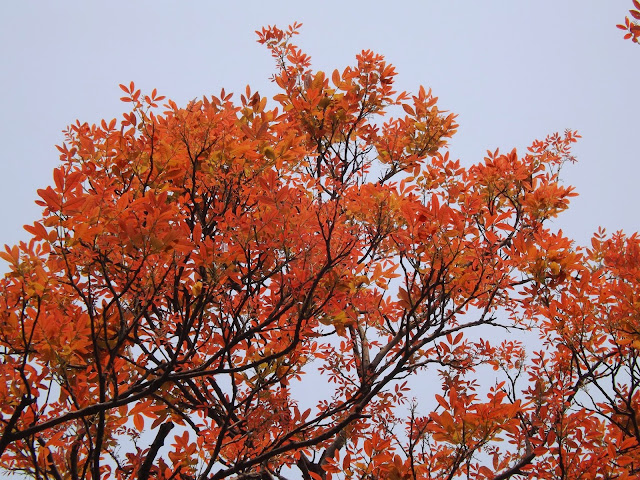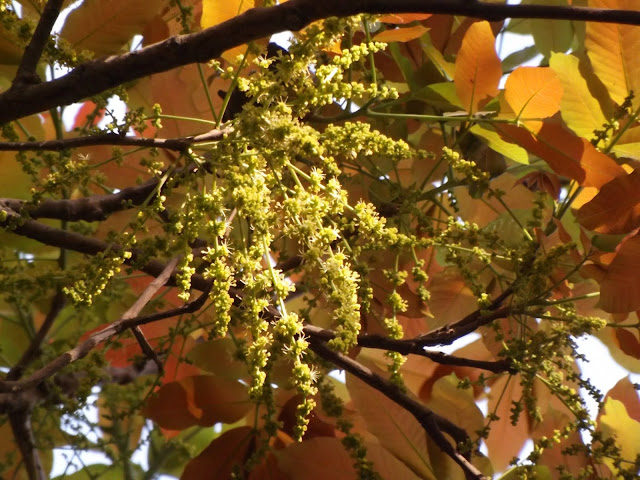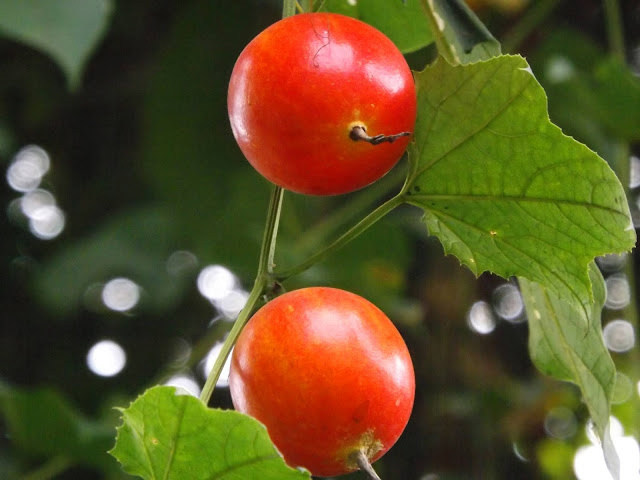Kushum or Ceylon oak, Schleichera oleosa
Kushum or Ceylon oak (Schleichera oleosa, family: Sapindaceae) is a large-sized deciduous tree with spreading canopy and huge trunk, attaining a height up to 40 m. The diameter of the trunk can be up to 2 meters. Bark is grey and smooth. The leaves fall at the end of winter and new leaves come in spring. The leaves are surprisingly red.
Other names: Joyna, Lakkha, Gum tree, Honey tree.
This giant tree can be easily recognized by shiny red leaves. The fruits look a lot like Lotkon and are called by this name somewhere. It can be seen scattered in Chittagong and Chittagong Hill Tracts including the northern part of the country. It is originated in the Southeast region of Asia, especially in India, Sri Lanka and Myanmar.
Leaves are compound, sessile; leaflets elliptic-obovate, 4-20 cm long and 3-9 cm wide, opposite. The extraordinary young leaves are brilliant red in color. These are seen several times a year.
Raceme inflorescence 6-15 cm long. Flowers are greenish yellow, without petals. Flowering occurs Feb-March.
Fruits broadly ovoid to globose, sometimes bilobed, 2-5 cm long, single or 2-seeded. Fruits are edible.
As an ornamental tree it is planted beside avenue, in park, garden and botanical garden in Bangladesh. Oil is extracted from its seeds and it is used in rheumatism, skin diseases and headache and for hair growth. The Santals use its bark for back pain and waist pain. It is also used to light lamps. Its timber is valuable and used to make industrial and agricultural tools. Wood is the finest coal. Bark is used for dyeing clothes. Lac bug is cultivated in the plant somewhere.
Synonym: Schleichera trijuga








Comments
Post a Comment